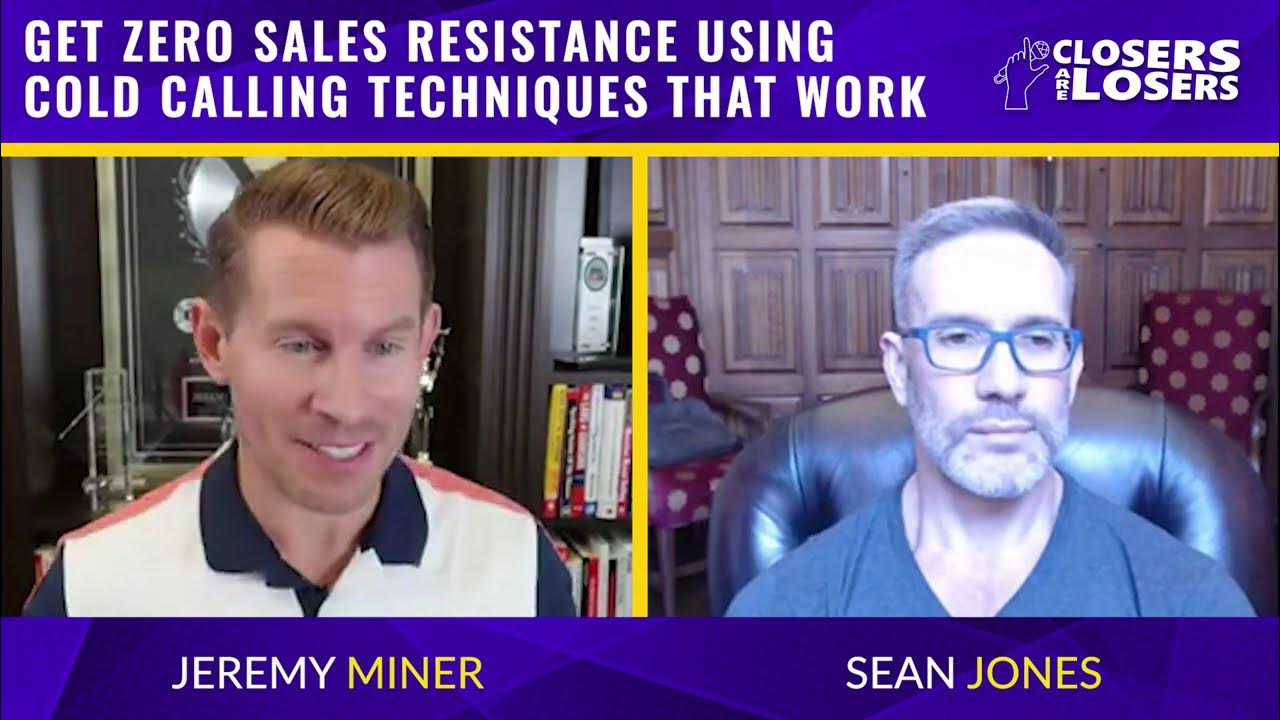How to Sell Your Product or Service - Introduction Meeting & Asking Questions (Part 6 of 11)
Summary
TLDRThis video script focuses on effective sales techniques for first-time customer meetings, emphasizing the importance of asking the right questions. It explains the difference between open-ended and close-ended questions, urging salespeople to prioritize open-ended questions to gather detailed information. The script also advocates for the 80/20 rule in conversations, where 80% of the talking should be done by the customer. Key advice includes listening for pain points and problems that will inform the sales presentation. Finally, the video encourages participants to craft situational open-ended questions to understand the customer’s needs and challenges.
Takeaways
- 😀 Understand the difference between open-ended and close-ended questions.
- 😀 Open-ended questions encourage the customer to provide detailed responses and more information.
- 😀 Close-ended questions are good for confirmation but should be used sparingly.
- 😀 Let the customer do the majority of the talking—aim for 80% of the conversation to be customer-driven.
- 😀 Avoid turning the conversation into an interrogation; balance questions with sharing valuable information.
- 😀 The 80/20 rule: Let the customer talk 80% of the time while you ask insightful questions.
- 😀 Focus on understanding the customer's current situation before presenting solutions.
- 😀 Listen actively for problems, frustrations, or points of dissatisfaction with the customer's current products or services.
- 😀 Incorporate the customer's problems into your presentation to make it more relevant and impactful.
- 😀 Visualize the conversation as if a spotlight is on the customer 80% of the time, reminding you to let them lead the conversation.
- 😀 Develop open-ended situational questions to uncover key issues and pain points the customer may be facing.
Q & A
What is the difference between open-ended and close-ended questions?
-Open-ended questions require a detailed response and encourage the customer to elaborate, while close-ended questions can be answered with a simple 'yes' or 'no'. Open-ended questions help gather more information, while close-ended questions are useful for confirmation.
Why is it important to use open-ended questions in a sales meeting?
-Open-ended questions allow the salesperson to gather more information about the customer's situation, needs, and potential problems. This helps in understanding the customer’s challenges and tailor the conversation to offer solutions later.
What is the 80/20 rule in sales meetings?
-The 80/20 rule in sales meetings suggests that 80% of the talking should be done by the customer, while the salesperson should talk only 20% of the time. This ensures that the salesperson is listening more than speaking, gathering valuable insights to address customer concerns.
Why should a salesperson avoid interrogating the customer with too many questions?
-If a salesperson asks too many questions without providing any input or information, it can feel like an interrogation. It is important to create a balanced conversation, where the salesperson shares insights and responds to the customer's input, fostering a more comfortable and engaging dialogue.
What is the visual example that the instructor gave regarding the customer conversation?
-The instructor suggested imagining a spotlight above both the salesperson and the customer during the conversation. The spotlight should be on the customer 80% of the time, symbolizing that the customer should be the focus of the discussion while the salesperson listens and learns.
What should a salesperson listen for when asking questions during a meeting?
-A salesperson should listen for problems, challenges, or dissatisfaction the customer may have with their current product or service. Identifying these pain points is crucial as it helps in addressing those issues during the later presentation phase.
Why is it important to ask both open-ended and close-ended questions during a sales meeting?
-Open-ended questions help gather detailed information, while close-ended questions are useful for confirming facts or getting simple responses. A mix of both helps to understand the customer’s situation and move the conversation forward effectively.
What are some examples of open-ended questions a salesperson could ask a customer?
-Some examples include: 'Can you tell me more about the challenges you’re facing with your current product?', 'How has the performance of your current service met your expectations?', and 'What improvements would you like to see in the product you're using now?'
How does understanding customer dissatisfaction help in the sales process?
-By understanding the customer's dissatisfaction or pain points, the salesperson can tailor their presentation to address those specific issues. This makes the solution more relevant and impactful, increasing the chances of closing the sale.
What role does information sharing play during the questioning phase?
-Sharing information during the questioning phase helps create a balanced exchange between the salesperson and the customer. It provides context and allows the customer to see the salesperson as knowledgeable, while also encouraging further conversation and engagement.
Outlines

This section is available to paid users only. Please upgrade to access this part.
Upgrade NowMindmap

This section is available to paid users only. Please upgrade to access this part.
Upgrade NowKeywords

This section is available to paid users only. Please upgrade to access this part.
Upgrade NowHighlights

This section is available to paid users only. Please upgrade to access this part.
Upgrade NowTranscripts

This section is available to paid users only. Please upgrade to access this part.
Upgrade NowBrowse More Related Video

Máxima Conversão Aula 9 Scripts de Proposta de Necessidade

Sales Funnel

The #1 Sales Skill That Changed My Real Estate Sales Career

Técnica de persuasão para veder seguro

Effective Cold Calling Techniques for Minimizing Sales Resistance

How to Close the Deal in Real Estate.Sales Closing Tips.|SHANTANU SINGH| Real Estate Business Tips
5.0 / 5 (0 votes)